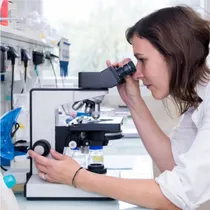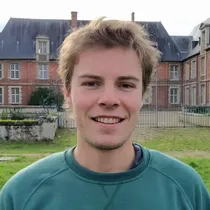Presentation

Brain tumors are composed of primary tumors of the central nervous system – such as glioblastoma (GBM) – and secondary metastatic tumors – such as melanoma and lymphoma as well as lung and breast cancers. Brain tumors are highly lethal and unfortunately not many improvements have been achieved to improve the survival of these patients.
Resistance mechanisms in brain tumors
Brain tumors are intrinsically resistant to therapy – radio or chemotherapy – and the recurrence rate is very high. Chemoradiation resistance is one of the most clinically-relevant challenges faced in patients with brain tumors. A key patho-physiological hub where resistance to therapy is developed is the perivascular niche (Fig. 1). Brain tumors are among the most densely vascularized tumors (Fig. 2). This increases the possibility for the tumor cells to take advantage from the frequent brain perivascular niches. The understanding of the cellular crosstalk established within the brain tumor perivascular niche might provide us with key discoveries of new brain tumors vulnerabilities.
Preclinical models and intravital microscopy
Our overall strategy is to use state-of-the-art intravital imaging technologies (Fig. 3) that allow us to dynamically visualize subclasses of tumor cells in their in vivo microenvironment with single-cell resolution. We also extensively use patient material to reconstitute a “patient-in-a-dish” model, by following a “bench-to-bedside and bedside-to-bench” strategy.
Funding and collaborations
Our team is currently supported by the ATIP-Avenir program (CNRS and INSERM), a collaborative intramural grant (PIC3), a co-funded European PhD position (IC-3i PhD program) and selected by ARC JCJC (declined grant).
We have assembled a network of numerous, highly experienced and supportive collaborators, which will provide my research group with the multidisciplinary expertise necessary to accomplish this innovative and ambitious project, such as Drs. Marie Dutreix (Institut Curie, radiation biology), Pierre Verrelle and Philip Poortmans (Institut Curie, radiation oncology), Chiara Villa (Hôpital Foch, neuropathology), Claire Lugassy (Institut Curie, experimental oncology), Raymond Barnhill (Institut Curie, anatomic pathology), Hiroaki Wakimoto (Dana-Farber/Harvard Cancer Center, neurosurgery) and Sylvie Roberge (Harvard Medical School, animal surgery).
Dr. Seano authored 26 articles, presented 16 seminars on his research, reviewed 15 papers and received 2 prestigious prizes, 2 travel grants and 5 competitive grants/fellowships for his studies. His scientific interests are tumor angiogenesis, vessel co-option, cell migration and resistance mechanisms. In 2017, he was selected as a Junior Group Leader in Institut Curie Research Center and he is now setting up his new laboratory.



















